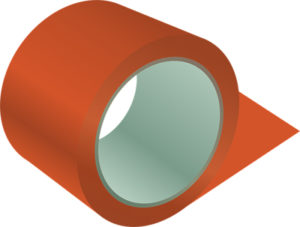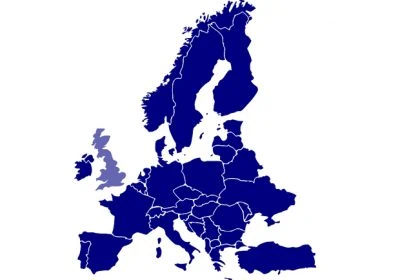The Federal Patent Court declared the German part of the European patent on polymer foam invalid. This is part of many years of patent proceedings concerning polymer foam – important for all adhesive products.
 The proprietor of the patent at issue – the German part of the European patent 2 500 375 – in connection with the present case is 3M Innovative Properties Company, a subsidiary of the U.S. technology company 3M, known inter alia for its adhesive products and for its products Post-it and Scotch. The patent in dispute relates to polymer foam and a process for its manufacture.
The proprietor of the patent at issue – the German part of the European patent 2 500 375 – in connection with the present case is 3M Innovative Properties Company, a subsidiary of the U.S. technology company 3M, known inter alia for its adhesive products and for its products Post-it and Scotch. The patent in dispute relates to polymer foam and a process for its manufacture.
The applicant sought the annulment of that patent. It relied on three arguments:
- The content of the application was inadmissibly extended due to the feature “measure” in the granted patent claim.
- The patent is unfeasible since there is no measuring method for determining compliance with the characteristic.
- Lack of patentability due to lack of novelty
The defendant 3M Innovative Properties Company contradicted all points and considered the patent in dispute patentable in the respective defended versions. The defendant emphasized that the patent claim does mention the technical means by which expansion (by adding polymeric, expandable microspheres) is induced, but does not teach or even limit itself to microscopic definition in the narrower sense. The core of the invention is the expansion before leaving the nozzle.
Production of polymer foam before BPatG
The Federal Patent Court (BPatG) therefore dealt in detail with the production of polymer foam, because objects containing polymer foam were already known at the priority date of the patent in dispute. This may indicate a lack of novelty.
The BPatG stated that the specification of the patent in dispute – as well as the original patent EP 1 102 809 B1 – did not expressly state which technical problem concerned the patent in dispute. However, this is harmless because the technical problem is to be developed anyway from what the claimed invention actually achieves in relation to the prior art. The Supreme Federal Court had formulated the technical problem of the basic patent in such a way as to provide a method in which foaming by means of expandable microspheres is possible reliably and without destruction of the microspheres.
Litigations in Germany regarding patents about polymer foam
 The current judgement of the Federal Patent Court belongs to the long-lasting proceeding concerning polymer foam before the highest German courts: The 3M Innovative Properties Company was also the owner of the original patent on the process for the production of polymer foam. This is the German part of the European patent 1 102 809, which was declared invalid by the Supreme Federal Court (BGH) 2015 after several years of proceedings in the judgment Polymer Foam II with effect for the territory of the Federal Republic of Germany (judgment of 09.06.2015, Ref.: X ZR 101/13). The German part of the European patent 2 500 375, that was now disputed before the BPatG, has to be seen in connection with the Polyermerschaum II judgment of the BGH.
The current judgement of the Federal Patent Court belongs to the long-lasting proceeding concerning polymer foam before the highest German courts: The 3M Innovative Properties Company was also the owner of the original patent on the process for the production of polymer foam. This is the German part of the European patent 1 102 809, which was declared invalid by the Supreme Federal Court (BGH) 2015 after several years of proceedings in the judgment Polymer Foam II with effect for the territory of the Federal Republic of Germany (judgment of 09.06.2015, Ref.: X ZR 101/13). The German part of the European patent 2 500 375, that was now disputed before the BPatG, has to be seen in connection with the Polyermerschaum II judgment of the BGH.
It is quite common to extend the content of an EP patent application compared to the corresponding priority application. Its patent claim comprises the forms of execution of the invention which were already contained in the priority application and also the forms of execution which were only added in the EP subsequent application.
Product-by-process characteristics are not part of protection
The BPatG clarified that the literal meaning of the characteristic “at least mostly expanding most of the expandable polymeric microspheres” in doctrine of the patent did not give rise to an exact specification of the proportion and extent of expansion, particularly in the border areas, since after passing through the extruder the extruded polymer foam could contain any proportion of non-expandable polymeric microspheres. Such “product-by-process” characteristics regularly serve only to define the product, but are not themselves the subject of the protected doctrine. The product itself had to meet the requirements for patentability – irrespective of its manufacturing method.
The BPatG found that the challenged doctrine of the patent in dispute resulting from the divisional application differed only in some features from that of patent EP 1 102 809 (master patent) resulting from the parent application. The mixing and extrusion process in the extruder – as it is described in the doctrine of the patent in dispute – is not the first choice, of course, but is not based on an inventive step. For the patent specification describes the mixing process in a general way. This procedure could not constitute an inventive step, because it was known expertise that the expansion after the nozzle led to irregular surfaces.
BPatG declares the challenged patent invalid for DE
The BPatG did not see an inadmissible extension of the patent claim, and the court also rejected the plaintiff’s accusation of lack of executability. However, the BPatG regarded the lack of novelty of the patent in dispute and the challenged doctrine as proven.
The BPaG therefore declared the European patent 2 500 375 invalid for the territory of the Federal Republic of Germany. The judgment is provisionally enforceable against a security of 120%.
Do you also need protection for your production prozess or your chemical production?
Our lawyers are experienced in trademark and patent law, national and international law. Please take your chance and contact us.

Sources:
Judgement of BPatG 11 march 2019 “Polymer foam”
Pictures:







Leave a Reply